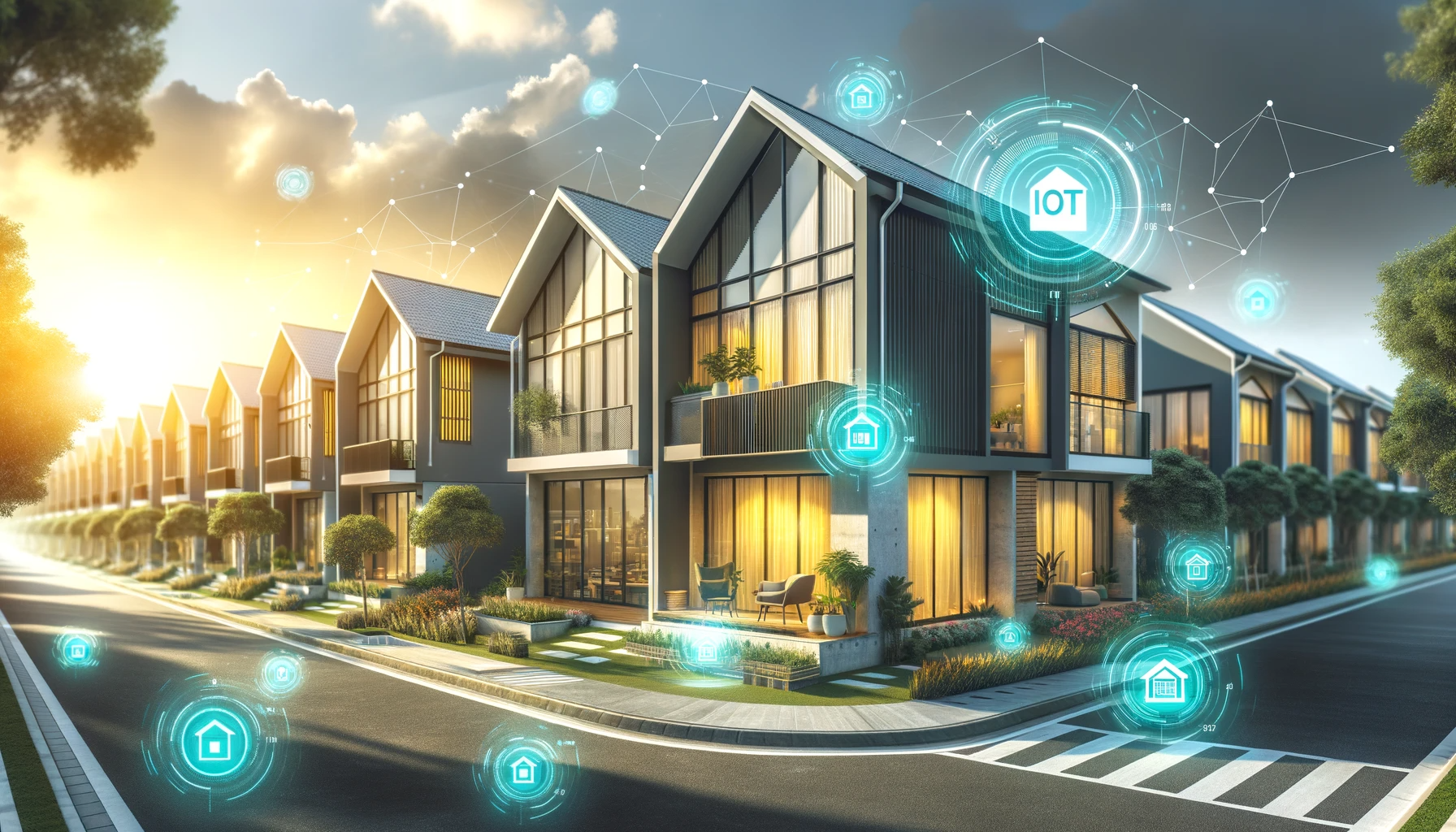In a paper published in the journal Sustainability, researchers introduced a pioneering framework that integrated Internet of Things (IoT) technology, such as IoT windows and occupant behavior, into residential distribution systems. This framework enabled more efficient load management and energy conservation.
 Study: Integrating IoT Technology for Efficient Load Management in Residential Distribution Systems. Image credit: Generated using DALL.E.3
Study: Integrating IoT Technology for Efficient Load Management in Residential Distribution Systems. Image credit: Generated using DALL.E.3
The study's case studies demonstrated that while the Local Distribution Company (LDC) saw reduced profits as households transitioned to IoT-based energy consumption, IoT-equipped homes benefited from lower operational costs. However, it also highlighted the importance of coordinated efforts between customers and utilities to align IoT-based household energy consumption with rooftop photovoltaic (PV) generation, ensuring optimal intelligent grid integration.
IoT in Sustainable Power Systems
The power system's historical reliance on conventional generation for supply-demand balance faces challenges due to increased renewable energy adoption and decreasing traditional capacity. Previous research has explored the fusion of IoT technology with intelligent grids, encompassing demand response, sustainable energy systems, AI applications, and innovative technologies such as bright windows.
Discussions have highlighted the benefits of IoT in intelligent grids while acknowledging challenges related to data management and security. Researchers have considered advanced technologies such as blockchain and AI to enhance grid performance. Additionally, past work has delved into IoT-based innovative grid applications, energy management, and energy-efficient strategies for homes.
Smart IoT Windows for Enhanced Home Efficiency
Integrating IoT technology brings a novel approach to residential load modeling, primarily utilizing IoT windows. These bright windows can dynamically adjust their Solar Heat Gain Coefficients (SHGCs) to control heat and visible light penetration into homes. Unlike commercial bright windows, IoT windows offer a more comprehensive range of SHGC options at a more cost-effective price. This IoT window system incorporates a dual-pane window and an intermediate shading layer. The double-glazed window exhibits a relatively high SHGC, while the middle shade can reflect over 95% of solar radiation. IoT windows adjust their SHGC in response to weather conditions and occupant behavior.
For instance, during cold weather, IoT windows maximize SHGC to retain heat, reducing daily heating system energy consumption. Conversely, in warm weather, when rooms are unoccupied, IoT windows minimize SHGC to prevent overheating, leading to reduced daily energy consumption of the HVAC system. The thermodynamic properties of the IoT window are determined using Window software, while EnergyPlus is used to simulate household appliances such as fridges, washing machines, dryers, electric ovens, and dishwashers.
The methodology proposed in this section revolves around a mathematical optimization model to maximize the profit of the LDC when incorporating IoT-based households into a residential distribution system. The objective function seeks to maximize LDC profit, considering factors like revenue from power sales, power purchase costs, and peak demand charges. The power flow equations rely on conventional principles to constrain power supply and consumption. Additionally, constraints are applied to peak load, feeder capacity, substation capacity limits, and bus voltage to ensure system stability and compliance. This framework is implemented and tested on a 33-bus radial distribution system using real-world data, including load profiles, time-of-use (TOU) and grid prices, occupant behavior, and building specifications. The results demonstrate the impact of IoT-based load management on energy consumption.
Results and Discussions
IoT-Enhanced Load Modeling: Researchers created household load profiles to simulate different weather conditions, showcasing the impact of IoT-based load management. The results demonstrate that transforming conventional houses into IoT-based houses leads to energy conservation. These load profiles underscore the efficacy of IoT applications in optimizing household energy consumption.
IoT Impact on Distribution Operations: Researchers assessed how IoT-based houses influenced the distribution system with varying penetration levels. The findings reveal that IoT-based load management reduces the maximum power imported through the distribution substation, benefiting the LDC and lowering operational costs for IoT-based households.
IoT and Rooftop PV Compatibility: Researchers compared load profiles of conventional and IoT-based houses with the power availability of rooftop PV generation. They observed that achieving compatibility between IoT-based loads and PV generation requires active coordination, such as demand response programs, to align energy consumption with renewable power availability for enhanced sustainability in distribution systems.
Conclusion
To sum up, this paper presents a forward-looking framework that integrates IoT technology, including IoT windows and occupant behavior, into residential distribution systems to enhance load management and promote energy conservation.
By modeling residential loads with IoT principles and employing mathematical optimization, the framework can reduce residential energy consumption and lower the maximum power imported through the distribution substation, thus increasing system capacity and postponing costly upgrades. While this approach may minimize utility profits by reducing energy sales, it lowers home operating costs. Achieving compatibility between IoT-based home loads and rooftop PV generation in intelligent grid environments is essential for reaping environmental and economic benefits, reducing reliance on fossil fuels, and fostering a cleaner, more sustainable living environment.